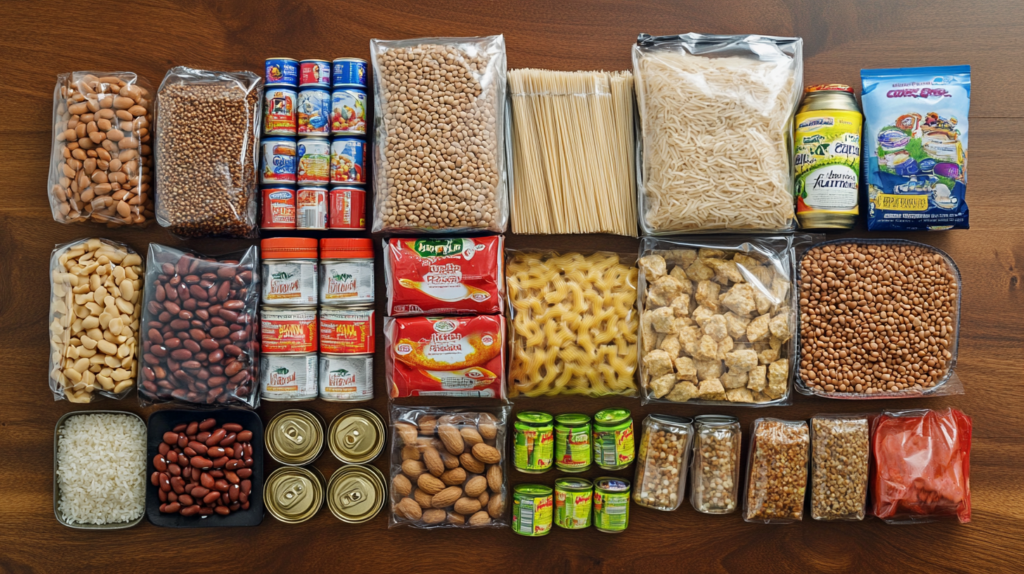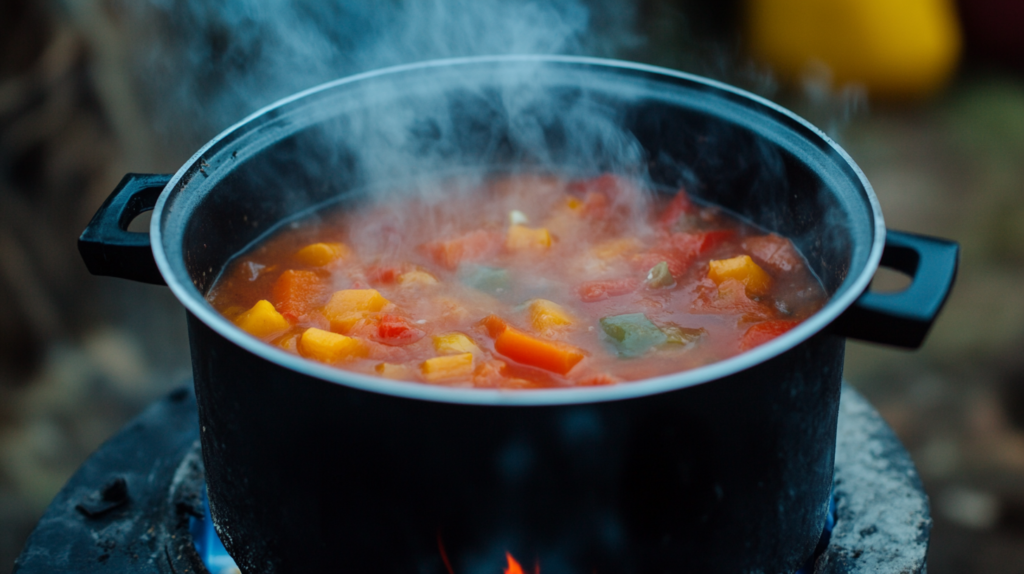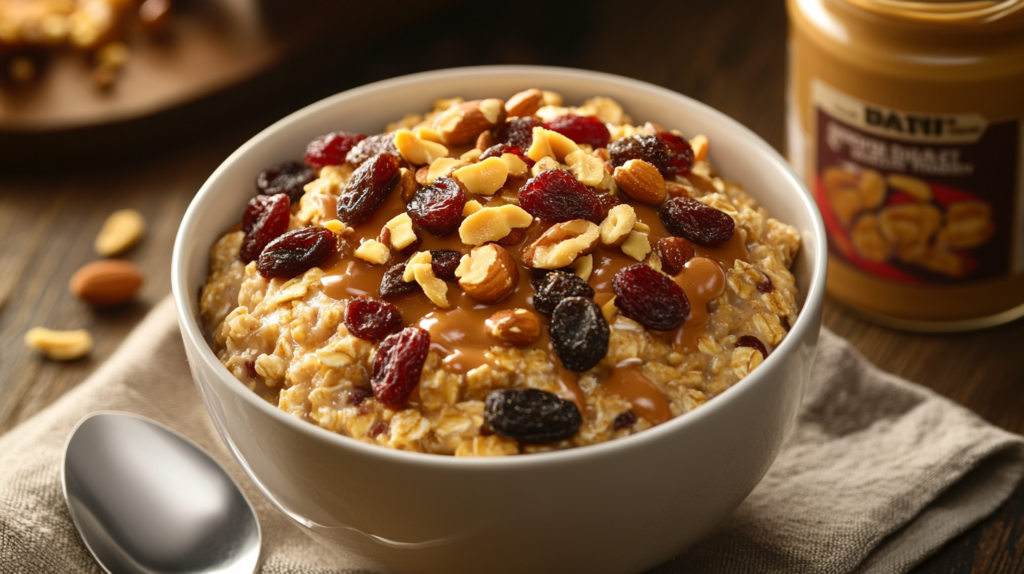Table of Contents
When disaster strikes, meals become more than just food they’re comfort, energy, and a bit of normalcy in chaos. Imagine you’ve just faced a power outage, a storm, or even a city-wide emergency. The last thing you want is to spend hours cooking or worrying about complex recipes. That’s why quick meals are your best friend during such times.
The Importance of Speed and Simplicity
Emergencies demand swift action, and your meals should be no exception. In such situations, simplicity is key. Think about it: minimal ingredients, shorter prep time, and fewer dishes to wash. A quick meal isn’t just about saving time it’s about preserving energy for other important tasks, like staying safe or keeping loved ones calm.
Balancing Nutrition with Limited Resources
Sure, you want meals fast, but they still need to fuel your body effectively. Nutrition often takes a backseat in emergencies, but it doesn’t have to. Even with limited resources, you can create meals rich in essential nutrients. Quick options like canned beans, instant oats, or nut butters provide protein and energy without the fuss.
Challenges Families Face During Disasters
Let’s face it disasters are stressful. Families, especially those with kids or elderly members, have unique challenges. From picky eaters to managing dietary restrictions, the pressure to meet everyone’s needs can be overwhelming. But with the right approach, quick meals can be both practical and satisfying for all.
Building a Disaster-Ready Pantry
A well-stocked pantry is like your superhero cape during an emergency. It saves the day by providing all the ingredients you need to whip up meals in a snap.
Essential Ingredients for Quick Meals

Here’s where smart planning shines. Stocking up on staples like rice, pasta, canned vegetables, and proteins ensures you’re ready for anything. Here’s a handy table of must-have items:
| Ingredient | Quantity | Why It’s Essential |
|---|---|---|
| White Rice | 10 lbs | Long shelf life, versatile base for meals |
| Canned Tuna | 12 cans | High protein, ready-to-eat |
| Peanut Butter | 2 jars | Energy-packed, no refrigeration needed |
| Instant Oatmeal | 3 boxes | Quick breakfasts, packed with fiber |
| Canned Beans | 10 cans | Plant-based protein, versatile in recipes |
These ingredients are lightweight champions. They store well, require minimal cooking, and pack a nutritional punch.
Prepping Foods That Last Long
Not everything lasts forever, but some foods come close! Think vacuum-sealed grains, freeze-dried fruits, and powdered milk. These items not only stay fresh for years but also retain their nutritional value. Pro tip: Label everything with purchase dates so you can rotate items before they expire.
Organizing Your Pantry for Maximum Efficiency
A cluttered pantry wastes precious time. Organize by categories grains, proteins, snacks—so you can grab what you need without digging around. Clear containers are lifesavers, letting you see contents at a glance. Add a small flashlight or battery operated light for quick visibility during power outages.
Tools and Equipment for No-Fuss Cooking
Quick meals during disasters aren’t just about ingredients. The right tools can mean the difference between a hot meal and cold cereal.
Must Have Kitchen Gadgets for Emergencies
Think lightweight and multi functional. A manual can opener is a no brainer (you don’t want to wrestle with a tin can during a blackout). Portable camping stoves or butane burners are fantastic for cooking without electricity. And don’t forget basic utensils like a sharp knife, cutting board, and heat-resistant tongs.
Cooking Without Electricity: Hacks and Tips

No power? No problem! Get creative with these methods:
- Solar cooking: Use a solar cooker to harness sunlight for cooking.
- Grilling: Your outdoor grill can double as a stove for pots and pans.
- One-pot meals: Minimize cleanup by cooking everything in one pot or pan.
Remember, safety first! Always cook in a well-ventilated area and keep fire extinguishers handy.
Simplifying Cleanup During Disasters
Let’s be real no one likes doing dishes, especially in an emergency. Stick to disposable plates, cups, and utensils if water is scarce. If you prefer reusable items, wipe them clean with sanitizing wipes before washing. Pro tip: Line pots and pans with foil for zero scrubbing afterward.
Quick Meal Ideas for Breakfast, Lunch, and Dinner
You’ve got the pantry, tools, and know how. Now let’s put it all together with easy meal ideas for every time of day.
5-Minute Breakfasts to Kickstart the Day
Mornings can be chaotic, but breakfast doesn’t have to be. Mix instant oats with hot water and top with dried fruits or nuts. Or try a peanut butter wrap using tortillas. For something refreshing, powdered milk makes instant cereal a breeze.
Stay tuned for the second part of this article, where we’ll dive into quick lunch and dinner ideas, kid friendly recipes, and managing meals under stressful conditions.

Quick Meal Ideas for Breakfast, Lunch, and Dinner (Continued)
Easy Lunches Using Pantry Staples
Lunches during disaster days don’t have to be boring. With pantry staples, you can create simple yet satisfying meals in no time. One of my go to options is a hearty tuna and bean salad. Just mix canned tuna, black beans, and some olive oil or vinegar (or even a dash of salt and pepper). It’s packed with protein and takes less than 10 minutes to prepare.
Another winner? Rice bowls. If you have leftover rice, toss in canned vegetables, some soy sauce or seasoning, and voila you’ve got a nutritious, filling dish. For a cold option, whip up a pasta salad using boiled pasta, canned corn, and whatever dressings you have on hand.
Dinners That Require Minimal Prep
Dinner is often the most challenging meal, especially when everyone’s tired and resources are limited. But it’s also the meal where you can bring comfort to the table. One-pot dishes are lifesavers here. For instance, a simple vegetable and noodle soup can be made with instant noodles, a mix of canned veggies, and a seasoning packet.
Another quick and crowd pleasing option is canned chili with rice. Heat the chili on a portable stove or in a pan, serve over cooked rice, and you’ve got a warm, hearty meal. For families, you can try DIY taco wraps with canned beans, some cheese (if available), and tortillas.
Kid-Friendly Meals in Tough Times
Let’s face it kids can be picky, and their favorite foods might not always be available during a disaster. But with a bit of creativity, you can still whip up meals that keep them smiling.
Snacks and Treats to Keep Kids Happy
Kids love snacks, and they’re easy to prepare with non-perishable items. Create a trail mix with nuts, dried fruits, and chocolate chips. Or make simple cracker sandwiches with peanut butter or cheese. If you’ve got powdered milk, a quick treat is instant pudding just mix, chill (if possible), and serve.
Adjusting Recipes for Picky Eaters
Picky eaters can be tricky, especially during a disaster when choices are limited. Stick to simple flavors that they already enjoy. For instance, if your child loves mac and cheese, keep a few boxed versions in your pantry. They’re quick, familiar, and easy to prepare. If you’re working with limited options, turn basic ingredients like rice or bread into fun shapes or faces to make meals more engaging.
Getting Kids Involved in Meal Prep
Disasters can be scary for children, so involving them in meal prep can be a great way to distract and comfort them. Let them stir ingredients, choose toppings, or assemble their own meals like wraps or sandwiches. It makes them feel included and helps lighten your load. Plus, who doesn’t love a little sous chef action?
Adapting Meals to Dietary Restrictions
For families with specific dietary needs, planning meals during a disaster can feel like solving a puzzle. But it’s entirely doable with the right approach.
Gluten-Free Options for Emergency Meals
Celiac disease or gluten sensitivity shouldn’t stop anyone from eating well in a crisis. Stock up on gluten-free staples like quinoa, rice noodles, and canned lentils. A quick gluten free dish is quinoa salad, made by mixing cooked quinoa with canned veggies and a simple dressing.
Creating Vegetarian and Vegan-Friendly Meals
Vegans and vegetarians can thrive in emergencies, too. Beans, lentils, and chickpeas are excellent sources of plant-based protein and are shelf-stable. A quick vegan meal idea is chickpea curry: canned chickpeas cooked with coconut milk and curry powder. Serve it with rice or flatbread for a complete meal.
Managing Allergies with Limited Ingredients
If allergies are a concern, prioritize hypoallergenic foods like rice, oats, and certain canned fruits. Always read labels carefully, even during a crisis. Simple dishes like rice porridge or baked apples can be lifesavers for families managing allergies.
Making Meals Last Longer in Crisis Situations
Stretching your food supply during a disaster is an art. With some smart strategies, you can make even a small pantry last longer than you’d expect.
Portion Control Tips to Avoid Waste
In times of scarcity, portion control becomes essential. Use smaller plates to serve meals, as they create the illusion of a fuller plate while conserving portions. For example, instead of serving a full can of soup for one person, mix it with some water or broth to make it stretch further.
Storing Leftovers Safely
Leftovers are gold during an emergency, so don’t waste them. If refrigeration isn’t an option, use a cooler with ice packs to keep food fresh. For dry items like bread or crackers, seal them tightly in plastic bags or airtight containers.
Rotating Your Supplies for Freshness
Even in a disaster, food rotation is crucial. Use the oldest items in your pantry first and save newer supplies for later. This prevents waste and ensures you always have fresh options available. Labeling food with purchase or expiration dates makes this process a breeze.
Preparing Meals Under Stressful Conditions
Cooking during a disaster can feel overwhelming, but staying organized and calm is the key to success.
Keeping Calm and Organized in the Kitchen
When stress is high, take a deep breath and focus on one task at a time. Lay out all your ingredients before you start cooking this helps prevent rushing and mistakes. Create a small prep station where you can keep essentials like knives, cutting boards, and seasonings within arm’s reach.
Time-Saving Techniques to Stay Efficient
Time is precious in emergencies. Opt for recipes with minimal prep, like one pot meals or no-cook dishes. If you’re boiling water, use it for multiple purposes like cooking pasta and blanching vegetables before discarding it.
Encouraging Family Collaboration During Mealtimes
Meal prep can double as a bonding activity. Assign simple tasks to family members based on their abilities whether it’s chopping veggies, stirring pots, or setting the table. Working together not only eases your workload but also keeps everyone engaged and connected.

